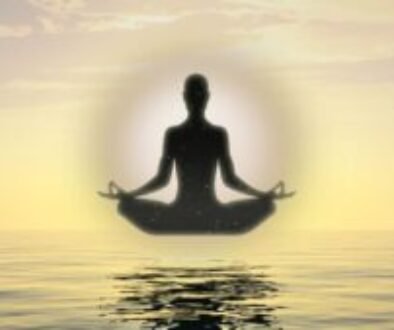
Exploring 8 Limbs of Yoga: Path to Wholeness and Well-Being
Yoga is a profound and intricate discipline that goes beyond physical postures and exercises. Its true essence lies in its holistic philosophy, the 8 Limbs of Yoga, outlined in Patanjali’s Yoga Sutras. In these Sutras, this eightfold path is called “Ashtanga,” which literally means eight limbs. (In Sanskrit, “ashta” means eight and “anga” refers to steps or parts of limbs.)
Each limb offers guidance for physical, mental, emotional, and spiritual growth. Together, these eight limbs serve as a roadmap to a more meaningful, purposeful and fulfilling life.
Understanding the 8 Limbs
- Yama – Ethical Standards
- Niyama – Self-Discipline
- Asana – Physical Postures
- Pranayama – Breath Control
- Pratyahara – Withdrawal of Senses
- Dharana – Concentration
- Dhyana – Meditation
- Samadhi – Enlightenment
These are the steps that an individual goes through in their life as they practice yoga. Each step showing should be completely understood and followed to attain the ultimate goal, that is, Samadhi (Enlightenment)
Yama – Ethical Standards
Yama requires tremendous inner discipline. It explains the codes of moral and ethical behaviour that people should follow in their daily lifes. Yama has 5 principles. These are:
- Ahimsa: Non-violence, Non-aggression, Non-Harmimg, Compassion, Kindness
- Satya: Truthfulness, Honesty, Transparency
- Asteya: Non-stealing, Integrity, Ethical Conduct
- Brahmacharya: Moderation in sensual pleasures, Self-restraint, Self-discipline, Control of Senses
- Aparigraha: Non-Greed, Non-attachment, Non-Possessiveness Contentment, Simplicity
Niyama – Self-Discipline
Niyama brings discipline, gets rid of laziness, and gives shapes the desire to follow the yogic path. It has 5 principles. These are:
- Saucha: Cleanliness, Inner Cleanliness, Purity, Clarity
- Santosha: Contentment, Satisfaction, Gratitude, Acceptance
- Tapas: Self-Discipline, Persistence, Determination
- Svadhyaya: Study of scriptures, Self-Study, Self-Awareness, Introspection
- Ishvara Pranidhana: Surrender to the Divine, Faith, Devotion
Asanas – Physical Postures
Asana is the practice of the physical yoga postures, it is what most people associate with yoga. They are one of the major and most significant tools of yoga. Their benefits help in physical, mental and spiritual development.
The Sanskrit word ‘Asana’ literally means ‘seat’ or ‘sitting posture,’ but it refers to various physical postures in Hatha yoga. For example, Chakrasana (Wheel Pose), Bhujangasana (Cobra Pose), Sirsasana (Headstand Pose), Matsyasana (Fish Pose), and Ustrasana (Camel Pose).
While there are many postures suitable for meditation, such as Padmasana (Lotus Pose), Sukhasana (Easy Pose), Siddhasana (Accomplished Pose), or Virasana (Hero Pose), the most important posture is, in fact, Sthira Sukhasana. It is a posture that a practitioner can hold steadily, comfortably, and motionlessly.
At a deeper, more philosophical level, Asana is the positioning of the body in various physical postures with total involvement of the mind, body, and soul. It helps to transform an individual by bringing them away from the awareness from the body toward the consciousness of the soul.
In modern times, there is often more emphasis on asanas, but it is important to note that they are only one aspect of the eightfold path of yoga.
Pranayama – Breath Control
The human body is composed of five main elements: Akasha (space/sky), Vayu (air), Agni (fire), Jala (water), and Prithvi (Earth). Amongst these 5 elements, Vayu or Air is considered to be the essential element that sustains life and maintains the body.
When this air is inhaled into the body through the process of breathing, it is called ‘Prana.’ Prana, a Sanskrit term which means “vital energy” or “life force.”
Pranayama essentially involves the control or regulation of Prana. Therefore, ‘Prana-yama’ can be interpreted as ‘breath control’.
Pranayama basically helps in the expansion and extension of energy or life force within our body. It begins with the simple act of breathing, leading us deeper and deeper into ourselves by teaching us to observe the respiration process. Pranayama consists of three movements: prolonged inhalation, deep exhalation, and prolonged, stable retention, all performed with precision. Practitioners should regulate the inhalation, exhalation, and retention of breath in a cyclical manner.
Practice of pranayama helps us to harness the power of breath for overall health. The mastery of pranayama will also allow one to control negative thoughts and establish harmony between body and mind . Regular practice of pranayama will help in improving the capacity of respiratory system as well.
Pratyahara – Withdrawal of Senses
Pratyahara is a term derived from Sanskrit. “Pratya” means withdrawal or detachment, and “Ahara” means anything we take in from the outside. Therefore, pratyahara can be described as the conscious withdrawal of the senses from external influence.
When we make a conscious effort to withdraw ourselves from external stimuli or objects of desire, the mind is released from the control of the senses.
Pratyahara basically changes our state of mind. It helps us become so concentrated and focused that the things outside us, like sensations and sounds, don’t easily distract the mind.
When one practices Pratyahara, they actively control their reactions to people and situations, their thoughts and their emotions and come a step closer to being the master of their mind.
Pranayama is actually the process of directing energy inward, making the mind fit for Pratyahara or the detachment of the senses.
Dharana – Concentration
The controlled mind that we gain in Pratyahara is made to focus its attention on a single thought in Dharana.
Dharna means to focus your mind and maintaining concentration on a single object. This point of focus can be an external object or an inner thought. It may involve practices such as candle gazing) focusing on the breath, a specific energetic center in the body, an image of a deity, or the silent repetition of a sound.
When this concentration is prolonged, it becomes dhyana.
Dhyana – Meditation
Dhayana is the uninterrupted flow of meditation.
When we get fully engrossed in the present moment and become completely absorbed in the focus of our meditation, this is when we are really meditating.
In Dhyana, release, expansion, quietness, stillness and peace are experienced. This prolonged state of quietness frees a person from attachment, resulting in indifference to joys of pleasure or the sorrows of pain.
Dhyana is central to yoga, but differs from general yoga practice. Explore meditation vs yoga in our post on ‘Meditation vs Yoga‘.
Samadhi – Enlightenment
Many of us understand the word ‘samadhi’ as ‘bliss,’ ‘enlightenment,’ or ‘self-realization,’ representing the final step and the ultimate goal.
Samadhi is a state of total absorption, realization, and freedom from all distractions, leading to a profound sense of peace and unity. It is rarely achieved, even with intense practice and dedication to yoga throughout one’s life.
The Purpose of the 8 Limbs of Yoga
The eight limbs of yoga are not just a set of practices; they are a path to spiritual awakening and self-realization. Each limb contributes to our overall well-being:
- Spiritual growth: Each limb of yoga contributes to the practitioner’s spiritual evolution, leading to greater self-awareness and understanding.
- Self-awareness: As we quiet the mind and observe our thoughts and emotions, we gain a deeper understanding of ourselves.
- Inner peace: Through the practice of yoga, individuals learn to quiet the fluctuations of the mind and find inner peace amidst the chaos of daily life.
- Connection with the divine: The journey ultimately leads some towards a deeper understanding of the divine or a higher power.
- Liberation (Moksha): In yogic philosophy, the ultimate goal of yoga is liberation from the cycle of birth and death. To attain freedom from suffering and realizing one’s true nature as pure consciousness.
Conclusion
The 8 limbs of yoga serve as a roadmap for individuals seeking wholeness and well-being in all aspects of their lives. By embracing these principles and integrating them into daily practice, people can embark on a transformative journey toward physical, mental, and spiritual harmony. So, take a deep breath and begin on your own journey of self-discovery through the eight limbs of yoga.



